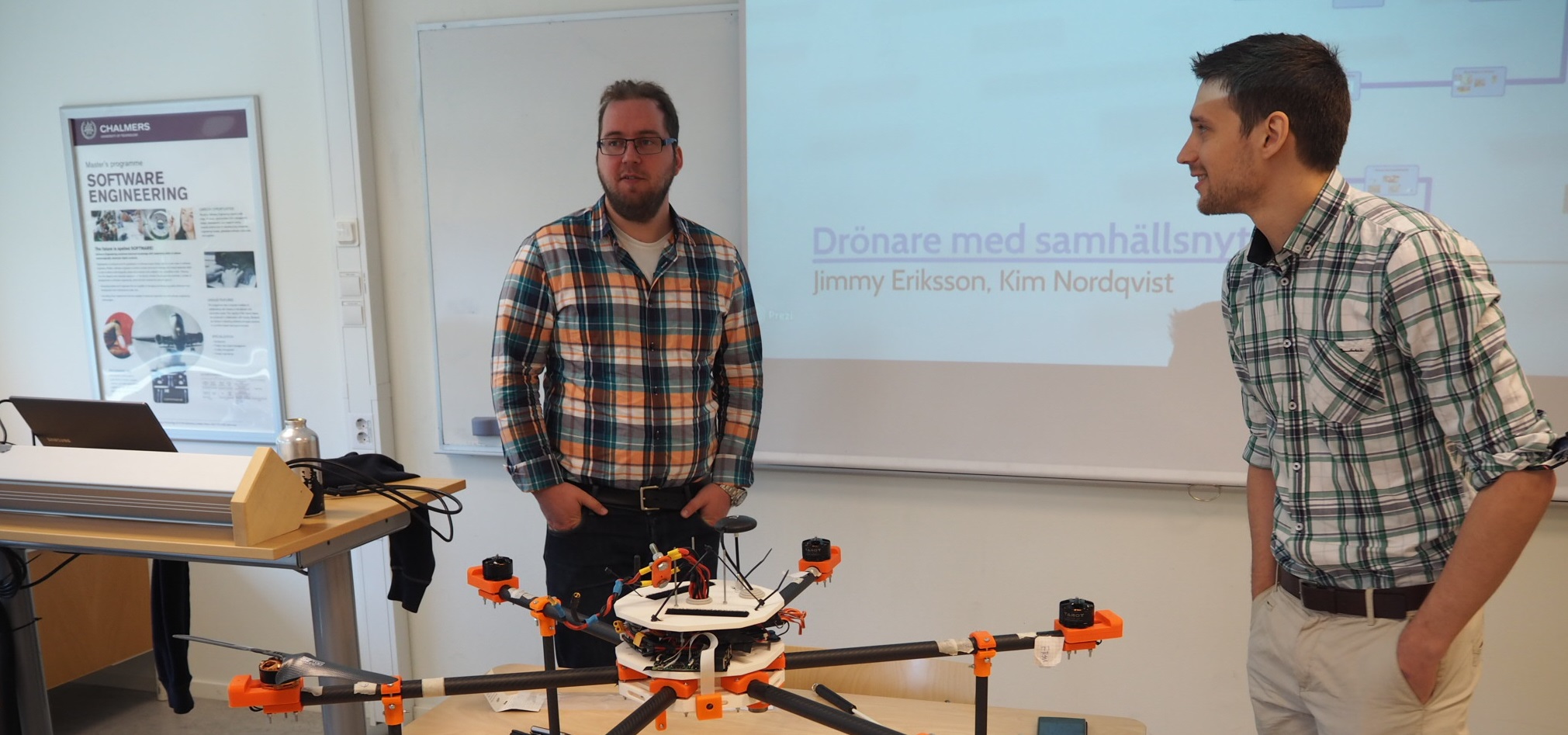You have been working on the project for quite a while. Tell us what it was about?
Jimmy: Our goal was to develop drones that will be able to carry cargo in the form of a defibrillator (AED) and deliver it to the emergency areas. The idea we had was that several drones will be assigned to a number of strategic buildings ensuring the coverage of a whole living area, for example, all Gothenburg city. The advantage of having a drone is that it can deliver AED faster than other types of transport and reduces costs for hospitals since they don’t need to have defibrillators in all locations.
Kim: We have also investigated an opportunity for a drone to carry an infrared camera, which can be used by firefighters for faster detection of forest fires. Several patrolling drones are much cheaper than one helicopter. The drones are still limited in matters of territories where they can fly, but we have a vision on how to make them even more flexible for exploring any type of area.
Which industries can benefit from using drones?
Jimmy: It is first of all healthcare and fire prevention. We also foresee the usage of such drones for guidance and military industries.
What was the set-up on your project?
Kim: That was a challenging, but exciting process! When we just started, we had little knowledge about drones, but were fascinated about them. So the first thing we have done was that we studied a lot of information. We read about electrical engineering, drones design, system mechanism functioning. After that we could proceed with designing and drawing the elements of a drone in a CAD 3D program to get an overview of every part. That was not enough – we have also printed the designed components with a 3D printer to get an actual look and feel of the drones. This helped us a lot to quickly diagnose what was working and which parts needed to be fixed.
Jimmy: During this time Alixander Ansari was our supervisor and Jan Ellwoth – technical expert. Klas Persson and David Rydén arranged us good working conditions at Sigma premises throughout this time.
How did the presentation go?
Kim: Very good, we got lots of questions and our topic was quite popular. Real success.
I’m very happy, we made it. Four month’s work ended with a real product.
Jimmy: The fact that we succeeded to produce the drone gives a very good feeling. We can proudly say that it was us who made it.
Kim: We would like to thank Sigma. It was hard to find a really interesting thesis project, and we believe that we found the best and most exciting of them.
Would you like to know more about our thesis projects? Contact us at student@sigmatechnology.com.
